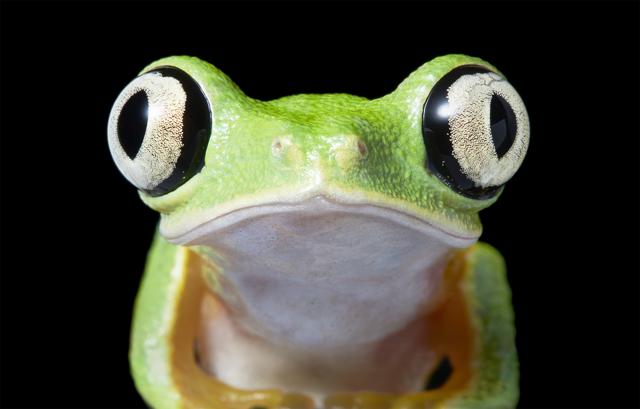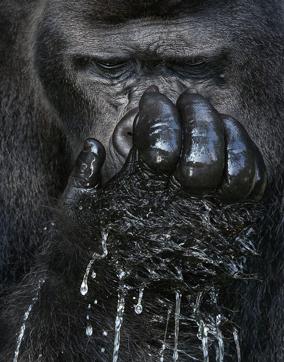Bengal Tiger to Saiga Antelope: Photographer spends 2 years clicking creatures on verge of extinction
London-based photographer, Tim Flach, spent two years photographing animals on the verge of extinction, in a book titled ‘Endangered’.
Primates coping with habitat loss, big cats losing the battle to human settlements, elephants being hunted for ivory, birds being taken captive - acclaimed photographer Tim Flach has spent the last 2.5 years travelling across the globe to document the lives of threatened species.
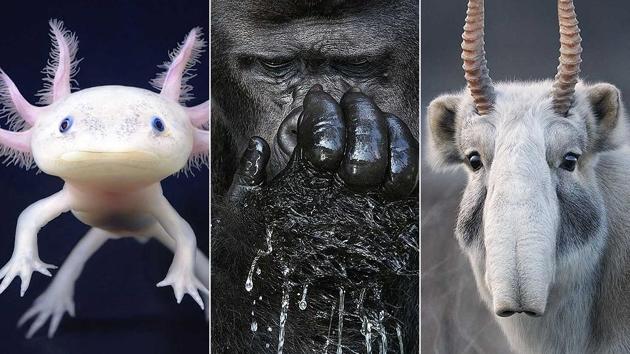
From forests to savannahs, polar seas to the great coral reefs - the 59-year-old from London has managed to construct a powerful visual record of animals and ecosystems facing harsh challenges, in a book titled Endangered. In his quest, Flach travelled to Russia, Kenya, China, USA, Galápagos Islands, Philippines, Gabon and Japan, among other countries.
Eminent zoologist Jonathan Baillie has provided a running commentary. Endangered unfolds as a series of vivid interconnected stories that pose moral dilemmas, expressed through more than 180 images.
The International Union for Conservation of Nature (IUCN) Red List categorises animals as near threatened, vulnerable, endangered, critically endangered, extinct in the wild and extinct.
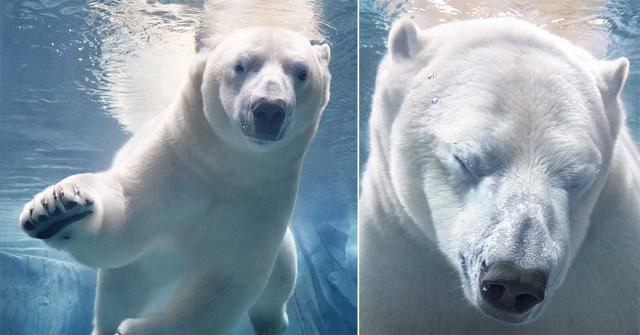
Endangered features animals in their natural habitat, clicked from afar, while some images have been shot at close-range, with the animals virtually striking a pose. How did Flach approach the animals, without scaring them away? The photographer usually works with people who know the animals best. “You have to be respectful while dealing with wild animals and am fortunate to have worked with people who knew the animals well, Flach tells Hindustan Times in an e-mail interview. “I couldn’t approach these animals the way I would approach a horse or a dog, so time was spent observing them.”
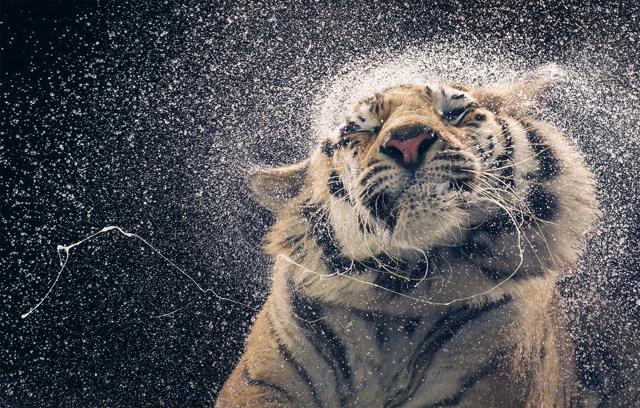
Flach’s biggest challenge, he says, was the Saiga Antelope. The photographer, who is also involved in animal protection and conservation, spent an entire summer in Russia’s Stepnoi National Park, Astrakhan pursuing the animal, in vain. Saigas are extremely shy creatures, so Flach would wait before sunrise, laying on the ground - camouflaged. “I couldn’t understand why my 5DS was capturing blurred images. It was much later I realised that the heat from the ground distorted the light so much that it the image produced soft and warped.”
![Saiga Antelope, [Native: Kazakhstan; Mongolia; Russian Federation; Turkmenistan; Uzbekistan | Regionally extinct: China; Moldova; Poland; Ukraine] | Conservation status: Critically Endangered (© Tim Flach) Saiga Antelope, [Native: Kazakhstan; Mongolia; Russian Federation; Turkmenistan; Uzbekistan | Regionally extinct: China; Moldova; Poland; Ukraine] | Conservation status: Critically Endangered (© Tim Flach)](https://images.hindustantimes.com/static/ht2018/1/Saiga_Antelope.jpg)
Flach returned to capture the critically endangered animal in another temperature extreme, - 35 degrees. The Saiga was just as elusive, but Flach managed to get a shot. “It was worth revisiting because the winter gave the shot a fairytale feeling.”
The Saiga is native to Kazakhstan, Mongolia, Russian Federation,Turkmenistan and Uzbekistan. It is regionally extinct in China, Moldova, Poland and Ukraine. Their global population is now estimated at approximately 50,000, down from 1,250,000 in the mid-1970s, with most animals found in Kazakhstan. Uncontrolled illegal hunting for horns (male horns are exported for the traditional Chinese medicine trade) and meat since the break-up of the former USSR has led to the catastrophic fall in numbers, according to IUCN.
The urgent theme running through Flach’s book is: ‘The future depends on the need for people to connect with nature.’
“Our primary responsibility is to culturally change our relationship with the natural world,” says Flach. “If humanity is to have a future, we need to take the best science and connect people visually to those stories in a way to provoke behavioural change.”
The most poignant moment of Flach’s journey was when he looked into the eyes of the last Male Northern White Rhino at Ol Pejeta Conservancy, Kenya. “I was wondering how we had reached a stage where I needed to photograph and document the animal.”
According to IUCN, in the only confirmed surviving wild population in Garamba National Park, Democratic Republic of the Congo, Northern White Rhino numbers declined rapidly from 30, in April 2003, due to an upsurge in poaching, to only four rhinos .
![Male Northern White Rhino [Native: South Africa - Possibly extinct: Congo - The Democratic Republic of the; South Sudan; Sudan - Regionally extinct: Central African Republic; Chad - Reintroduced: Botswana; Kenya; Mozambique; Namibia; Swaziland; Uganda; Zimbabwe - Introduced: Zambia] | Conservation status: Critically Endangered/Possibly Extinct (© Tim Flach) Male Northern White Rhino [Native: South Africa - Possibly extinct: Congo - The Democratic Republic of the; South Sudan; Sudan - Regionally extinct: Central African Republic; Chad - Reintroduced: Botswana; Kenya; Mozambique; Namibia; Swaziland; Uganda; Zimbabwe - Introduced: Zambia] | Conservation status: Critically Endangered/Possibly Extinct (© Tim Flach)](https://images.hindustantimes.com/rf/image_size_640x362/HT/p2/2018/01/09/Pictures/_8241df1c-f502-11e7-95e6-04e0a17510b6.jpg)
Flach’s life is as exciting as one would imagine it to be, with each day requiring him to put on a different hat. There are no typical work days. “I juggle between being a commercial photographer, art photographer, director, lecturer, author, and researching so I don’t really have a proper job! What I enjoy most is organising experiences for other people through my images and enjoying the variety of challenges that are thrown at me.”
Flach studied fine arts at London’s Central St. Martin’s College of Art and Design, and is best known for the originality that he brings to capturing animal behaviour and characteristics. “I am often exploring the close relationship between animals and humans, in particular how humanity imposes and reveals its ideals when trying to understand and work with animals.”
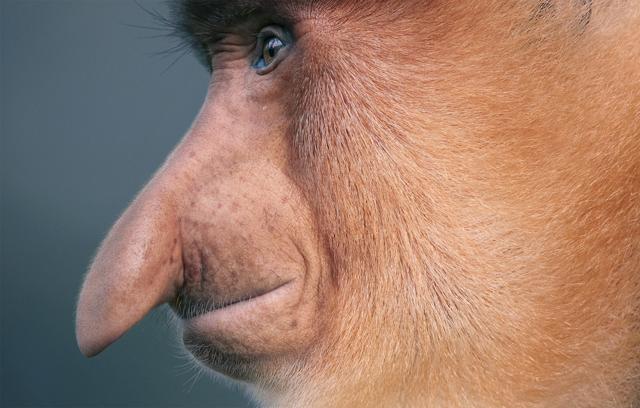
He has published 3 books so far -- Equus, Dogs Gods and More Than Human. Endangered is his fourth, and most ambitious book. All his works have an underlined technique - that of capturing animals in a typically ‘human way’. Flach says, “When it comes to representing animals, the images need to posses a sense of character, personality and kinship. That way we are more likely to connect with them and act in a responsible way. This becomes all the more important in case of endangered species.”
You can follow Tim Flach’s work here:
Instagram: @timflachphotography
Twitter: @Timflach
Facebook: @Timflachphoto
A post shared by Tim Flach (@timflachphotography) on
A post shared by Tim Flach (@timflachphotography) on

